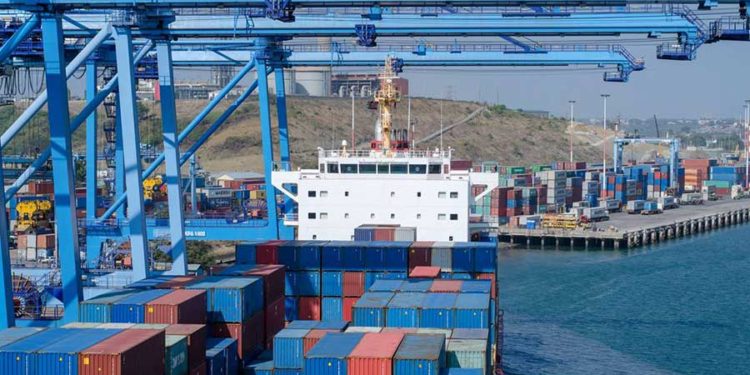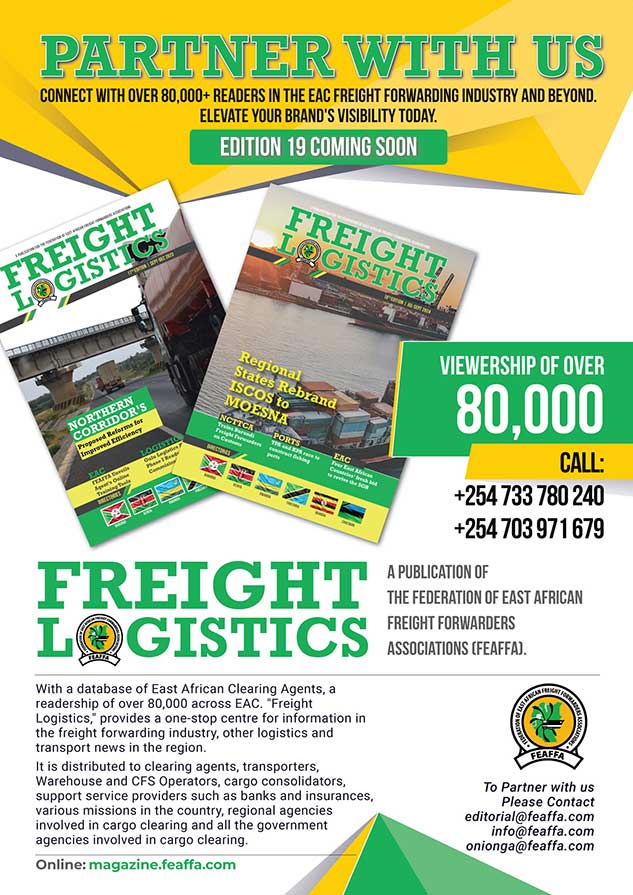Kenya Port Authority (KPA) is working on a new Terminal Operations System (TOS) to optimize port operations.
KPA says the new TOS is a more advanced integrated platform when compared to the current Kilindini Waterfront Automated Terminal Operation System (KWATOS), which was created in 2008.
It incorporates additional systems like Reefer Management System (RMS), Optical Character Reader (OCR), Truck Appointment System (TAS), Radio Frequency Identification (RFID) and Barcode for Conventional operations, for a competitive edge in the maritime business.
The New Terminal Operations System will also comprise smart gate, smart yard, smart quay, smart rail, smart motor vehicle and breakbulk operations.
Interfacing various key cargo interveners including Revenue Authorities, Cargo Owners, Shipping Agents, Partner Government Agencies (PGAS) and Clearing and Forwarding Agents, the new system is expected to improve port business through enhanced efficiency and productivity in port operations, documentation and seamless interface with relevant port community systems.
For easier integration, KPA is working on improving current system infrastructure platforms to guarantee high capacity, scalable, multi-tenancy, high-speed and readily available network services.
The new TOS is to comprise a smart gate, smart yard, smart quay, smart rail, smart motor vehicle and breakbulk operations.
This, KPA believes will competitively propel port services to world-class standards and also substantially contribute towards achieving greater levels on Ease of Doing business in terms of cost and service lead-time at Kenya’s Indian Ocean maritime border and related inland facilities.
KPA has also said that the port of Mombasa is to witness improved cargo safety, tracking and security; improved traffic management and increased profitability.
“Other overall benefits of the Terminal Operations System include faster vessel productivity and turnaround, optimised yard, rail and gate operations; increased visibility of operations; planned workloads, control of operations and storage, enhanced workers safety; timely and accurate billing; improved business intelligence and reporting,” said Ms Evelyn Mwamure, Manager TOS & Operations Projects at KPA.
The continued automation through KWATOS has been to establish a Planning and Management Information System for the waterfront cargo operations and documentation, and the new improvements currently underway, has benefited KPA with enhanced documentation, enhanced security, system audit trails that provide historical data on the system, ability to monitor cargo and document progress, reduce dwell-time of containers and enhanced automated customer’s transaction platform.
The new system, in addition to addressing any missing functionalities in KWATOS, will provide an enabling environment for KPA to optimise on full benefits of automation in cargo operation and marine services while ensuring enhanced customer service.
The new system comes on the background of a similar upgrading of the Kenya Revenue Authority (KRA) system, which is set to launch its new system- Integrated Customs Management System (iCMS).
“Integration between the Kenya TradeNet and KRAs iCMS is almost complete. The only remaining part is the integration with the exports module which we target to complete by the end of October 2020,” Mr. Amos Wangora Chief Executive Officer (CEO at Kentrade said.
KRA has been rolling out the iCMS in phases. The air cargo function went live in various airports across the country including Jomo Kenyatta International Airport (JKIA) on March 10, 2019.
iCMS has been developed in line with the World Trade Organisation’s (WTO) requirement for the simplification and harmonisation of international trade procedures.
The new system once fully rolled out will deliver agility, accuracy, security, and transparency using systems that are empowering rather than restrictive. It is a modern, robust and efficient system that runs on the latest technological platforms which seamlessly connects with KRA’s internal systems and external stakeholders’ systems to achieve faster cargo clearance. It replaces the Simba system, which the taxman has been using for over a decade now to clear goods.





